Sogetsu Ikebana: Let nature bloom in your home
Ikebana is not just about flowers—it’s not just about sticking a flower into a vase, says Sofu Teshigahara who founded the Sogetsu School of Ikebana, Japanese floral art, in 1927. It’s about an artist’s passion to create beautiful forms; it’s about the person who arranges them.
On a crisp and brisk afternoon, Ikebana artists of the Sogetsu Ikebana Group 8 under the umbrella organization Ikebana International are all set to show off their creations to fellow members and some invited guests only.
Go East ... and West
East meets West as Muebles Italiano, in all its neoclassical grandeur, provides the venue on Paseo de Magallanes for this much-awaited Ikebana event. Noel and Aileen Gonzales are the day’s gracious hosts, with their award-winning tenor son Chris providing the entertainment.
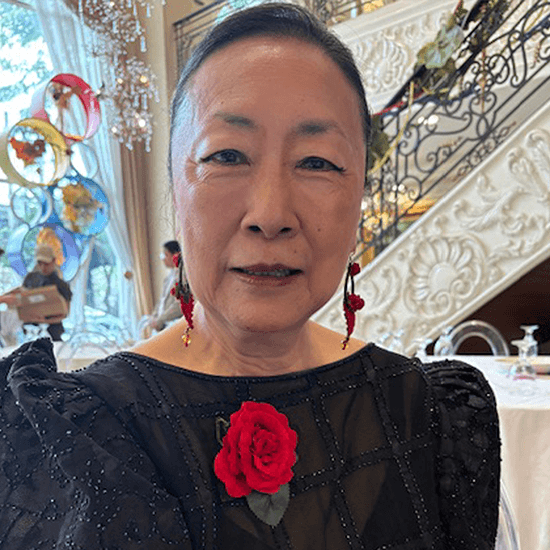
Comes the biggest challenge: How will this group of Ikebana enthusiasts relate neoclassical to Ikebana? Their much-loved teacher, Connie Yuchengco-Gonzalez, knows that since this is a two-story high structure, and the muebles (furniture) are heavily gilt, the arrangements have to be strong statements and the sizes commensurate to the size of the room. Each group member will do an individual arrangement to be situated inside a circular cubicle showcasing the shop windows of Muebles Italiano. As the teacher of Group 8, Connie will do a 20-minute demonstration consisting of two demonstrations and a big arrangement.
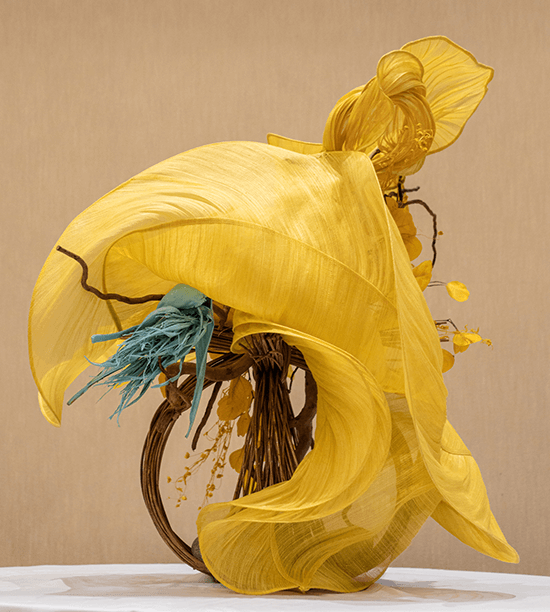
Taking center stage are three of Connie’s creations: origami, Japanese paper craft; rococo, when Chinoiserie was embraced by Europe clumping Asia under China but aware of Japan by calling Western lacquering “japanning”; and Japonaiserie in Madame Butterfly, adorning the stairs’ balusters with a big arrangement made of sanderi roots, sea grape branches, heliconias, monsteras and anahaw palm leaves.
To elaborate, Connie’s rococo era pays tribute to the asymmetry in art. In France, Lady Pompadour, official chief mistress of Louie XV, depicted art showing symmetry.
And then, to everyone’s pleasant surprise, some group members form a line and start dancing to the beat of Puccini’s Cio-Cio-San Aria from Madame Butterfly.
You and Japonisme
Some definitions: Japonisme focuses on Ikebana Sogetsu and its free-flowing nature. The school will tell you that Ikebana can be arranged anywhere, by anyone, using anything.
Connie recounts, “It used to be that Ikebana arrangements were only placed in temples (flowers and trees were thought to have strong powers to attract the gods). The Sogetsu School helped to elevate the practice to an artform. Its founder, Sofu Teshigahara, encouraged spontaneous creativity, upholding artistic expression above technique.”
Connie goes on to relate, “Commodore Perry forced Japan to open its ports in the 1850s, and a shop selling Japanese pottery, ukiyo-e prints and other exports from Japan attracted a group of artists who were looking for a new way to express themselves.”
What is it about Ikebana that has changed the lives of these members/enthusiasts?

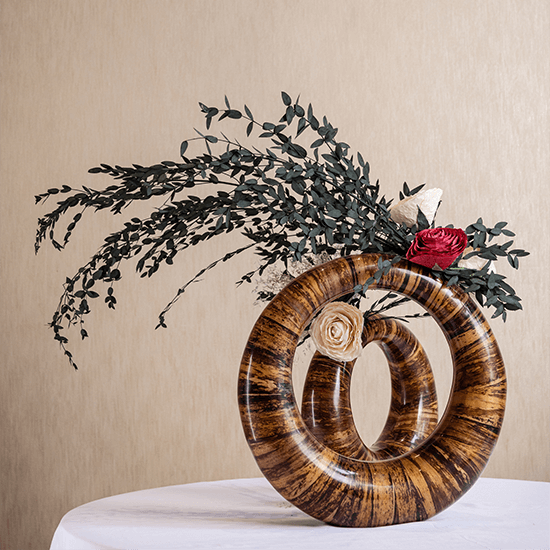
Mike Claparols, husband of Banj Claparols, is quick to reply, “It’s the creativity, teamwork, community. My wife and I try to outdo each other.”
Mike’s “Circles” embodies the Zen principles of balance, enlightenment and simplicity.
Ma and Van Gogh
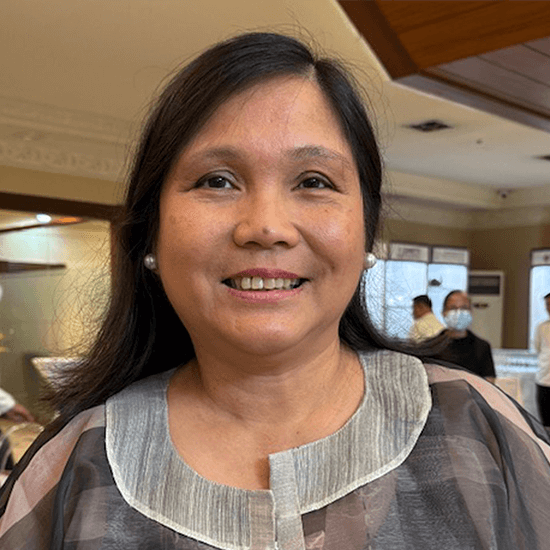
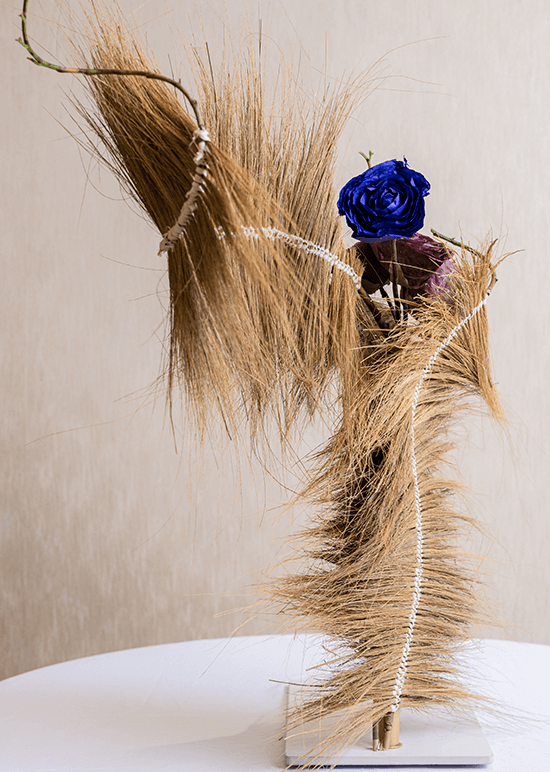
Banj, also an exhibitor, says, “I love combining two distinct yet complementary artistic philosophies: the Japanese concept of Ma (the art of space and time) and the passion, emotion and movement found in the works of Vincent Van Gogh. I would like to thank my daughter who diligently wove all the tambo just so I could complete my arrangement.”
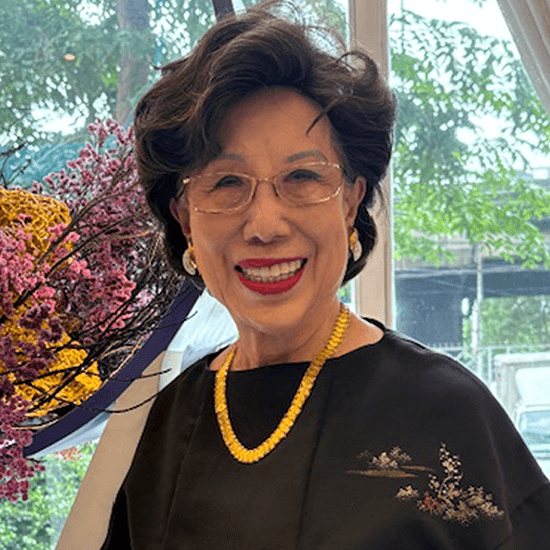
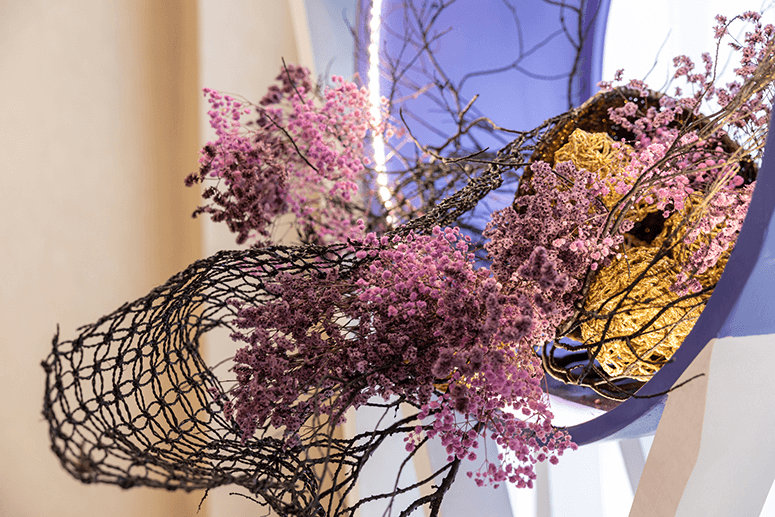
Dellie Yap says with a long sigh, “It’s so beautiful, so simple! It’s one step up in the enjoyment of life.”
Nancy Uy, who’s been doing Ikebana for over 25 years now, confesses, “It relaxes me. It gets my mind off whatever I’m worrying about. I get to appreciate nature which has so much to give to us but we just waste it.”
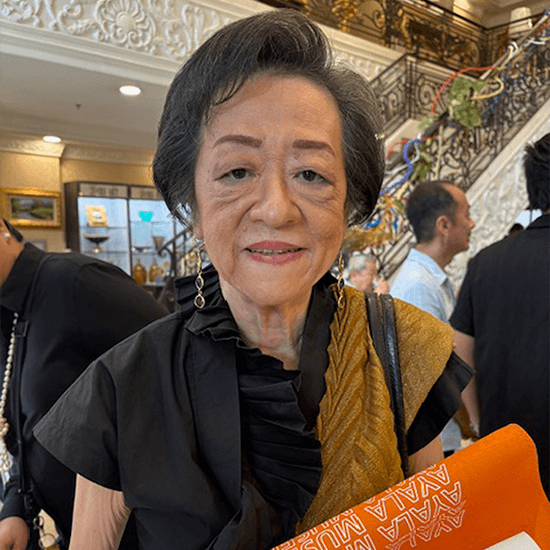
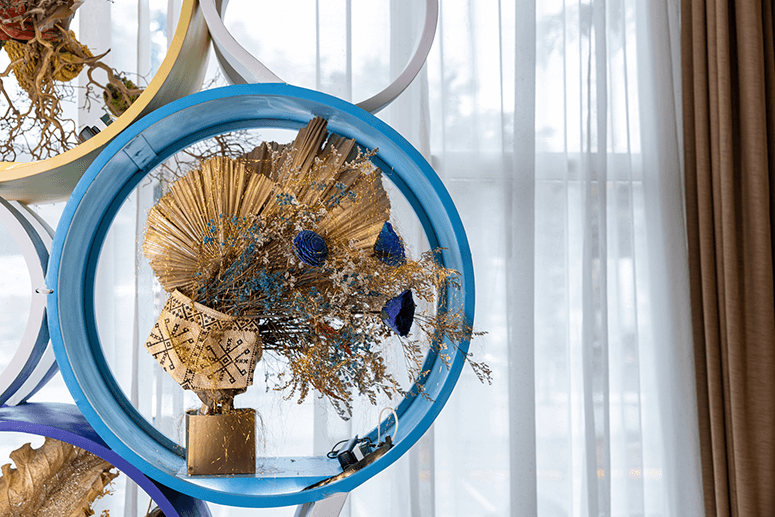
Nancy celebrates native materials by using dried anahaw leaves and two Hanuno Mangyan bayongs as containers. These traditional containers are believed to protect against evil spirits.
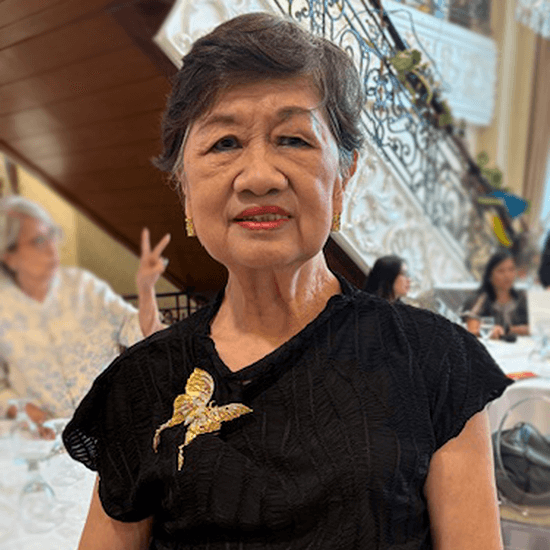
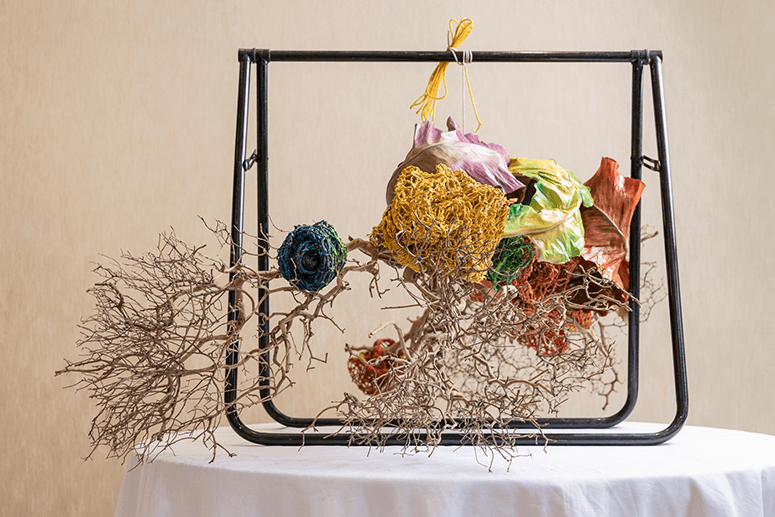
Lily Lim-Chua is happy to share, “Here, we meet a lot of friends and we enjoy being together. We forget everything and we’re happy and concentrated on what we’re doing. It simplifies our lives and makes everything beautiful!”
Lily’s hanging arrangement titled “Life by Colors” emphasizes natural elements and movement, using baskets of pandan shaped like flowers.
Baby Bunag declares, “My arrangement is a perfect illustration of wabi-sabi (accepting beauty that’s imperfect). Life is not perfect, but we can make it beautiful by finding the beauty in it. Beauty is in you. You can be in the best place, but if you want to be miserable, you will be.”
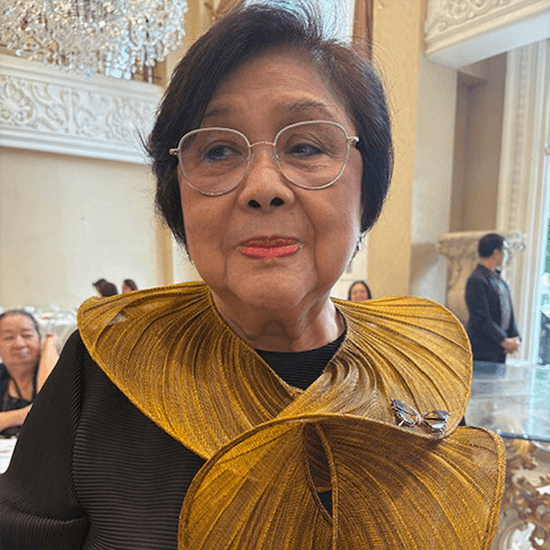

Baby believes there’s perfection in imperfection. “There’s beauty in the broken, in rubbish. There’s something beautiful even in dying things.”
Their teacher Connie certainly inspired and motivated her students well. As she always tells her students, “Challenge yourself constantly so that you can grow and improve yourself. Learn something new so you may share with others.”
Yes, embrace the ancient art of Ikebana, and let nature bloom in your home and nourish your soul.



